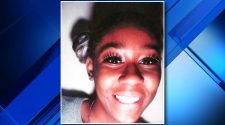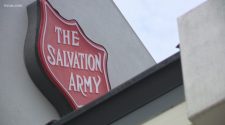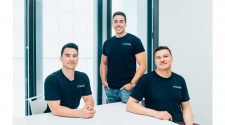A few months ago we introduced you to Expert3D, a postgraduate course aimed at doctors, healthcare professionals, engineers and technicians in the healthcare sector. Offered by the Hospital Sant Joan de Déu Barcelona (SJD) and other European medical centers, and accredited by the Polytechnic University of Catalonia (with ECT credits), this course has theory-based modules dedicated to certain areas of focus among which artificial intelligence, 3D printing and medical image post-processing stand out. In addition, the growing demand for 3D applications in the healthcare sector has encouraged many organizations to launch professional training and courses to meet the need to adapt to new technologies in medicine. In this context, we met with two of the main representatives of Expert3D, Josep Munuera and Arnau Valls, to learn more about the importance of training in the healthcare sector as well as technical knowledge of the additive manufacturing industry, artificial intelligence and emerging technologies.
3DN: Can you introduce yourself and talk about your connection to 3D printing?
We are Dr. Josep Munuera, Head of the Diagnostic Imaging Department at SJD, and Arnau Valls, engineer in the R&D department at the same Hospital and co-directors of the Expert3D course. In 2015, together with a multidisciplinary team of 2 surgeons, 1 bioengineer, 2 simulation experts and 1 finance manager we created the 3D planning unit of the Hospital Sant Joan de Déu (3D4H Unit), one of the first 3D planning units in Spain and one of the first in Europe at pediatric level.
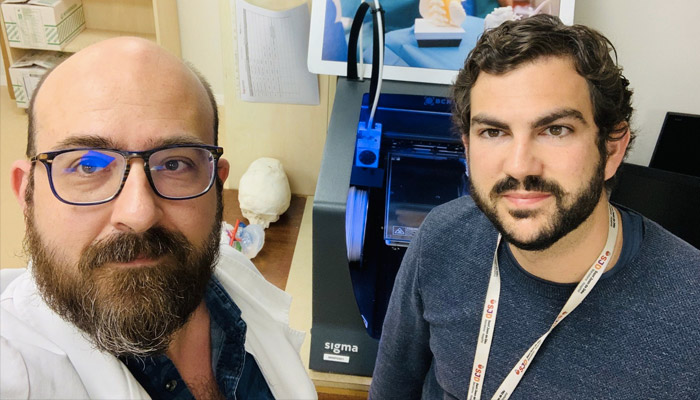
A la izquierda Josep Munuera y a la derecha Arnau Valls. Los Co-Directores del Curso Expert3D
The creation of the unit and the contact with the technology came naturally and out of common interest from each of the specialization areas. 3D planning is a technology that in health is born from the union of the deep knowledge of radiological imaging, anatomy and diagnostic imaging, surgical procedures and knowledge of technology and the production of custom medical devices. This conjunction of specialties and the curiosity to learn and explore the possibilities of technology and other fields are what motivated this collaboration. Since then, we have worked on complex surgical planning projects and R&D projects in the field of medical image post-processing and 3D at national and international level. Four years ago, seeing that there were no specific training programs in the field of 3D planning applied to medicine, we decided to create one ourselves in order to reflect what we would like training in this field to be.
3DN: What does the Expert3D training offer consist of, and why did you decide to launch it?
Expert3D is a postgraduate course of 20 ECTS credits accredited by the UPC, as well as by the Academy of Medical Sciences of Catalonia and 7 other Spanish universities. Our mission is to train professionals in advanced medical image postprocessing oriented around 3D and artificial intelligence. It is aimed at professionals in health-related sectors, including biomedical engineering, medical imaging specialists, surgeons, product engineers and other technical and clinical specialties interested in delving into these subjects.
The project was born from our own need to acquire and standardize in our day-to-day knowledge of these new fields in the world of medical image post-processing where knowledge from disciplines such as radiology, surgery and engineering are mixed. At SJD we started doing 3D planning and AI between 2014-15 and in 2015 we created the 3D planning unit. We realized that there was no practical training aimed at forming multidisciplinary teams dealing with these types of technologies and challenges.
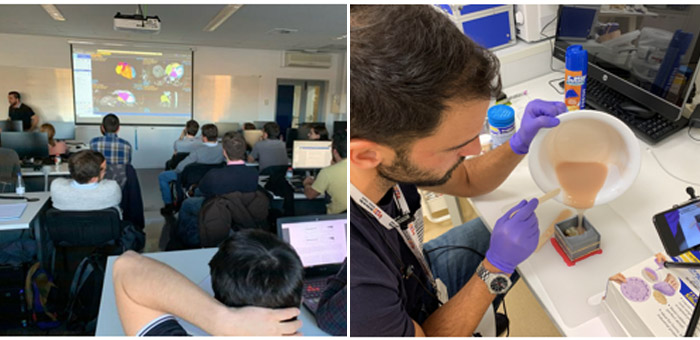
On the left, medical image postprocessing class with Prof. Gerard Blasco; On the right, simulation class with Prof. Carlos Alaez, from the Expert3D course.
3DN: What are the benefits of combining 3D printing with artificial intelligence in the medical sector? How is this topic covered in your courses?
Both are disruptive technologies focused on improving diagnostic or therapeutic accuracy. They are disruptive technologies that we are seeing more and more in hospitals helping to improve clinical outcomes and follow-up, patient experience and the work of professionals. At Expert3D, from medical images, we learn to process and obtain either 3D surgical planning models or we learn to quantify these results or even create an automatic image classifier using artificial intelligence algorithms. Clinical and technical specialists with knowledge in 3D planning and artificial intelligence technologies are increasingly in demand in the medical sector and this will generate new jobs in the sector.
3DN: In your opinion, what is the importance of training in the 3D sector? What recommendations would you give in this regard?
It is a very new technology, which is evolving and improving rapidly and in which (in the case of its application in healthcare) several specialties and knowledge are mixed, forcing professionals from different specialties to collaborate. We will see more and more applications and solutions in hospitals using these technologies. Diagnostic imaging is one of the first specialties to adopt both 3D planning and artificial intelligence. However, these technologies are not currently taught in medical schools, nor is working in technical and clinical teams together. Having a solid foundation of knowledge of the technology, imaging, anatomy and the possibilities offered by the technology is key to getting the most out of its application.
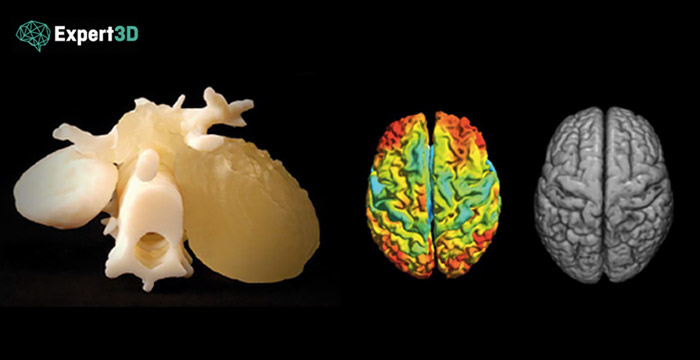
3DN: How do you see the adoption of additive manufacturing in the medical sector in the next 5 years?
We have seen exponential growth in all industries, but especially in the healthcare sector, as well as the arrival, more and more, of specialized 3D units within hospitals. Europe has already created the directives that will guide the adoption of this technology. An example of this is the new Medical Devices Directive (MDR) that will come into force this May, which already considers the manufacture of medical devices in house in hospitals and classifies 3D printed models or surgery support parts as medical devices (class I, II and III).
On the other hand, the COVID-19 pandemic has shown that additive manufacturing and 3D image post-processing techniques, as well as the use of artificial intelligence, can be of great use in improving treatments, developing customized medical devices and facilitating diagnosis. We have seen how 3D printing has demonstrated its maturity by helping to produce on demand protection systems and respirator parts to save lives when there was a crisis because they were out of stock . We have also seen how artificial intelligence has helped in the early diagnosis of COVID-19 from where it has spread in the lungs (so much so that it has become a commonly used tool in patient triage). All this shows us that these disruptive technologies are already at a sufficient stage of maturity to bring solutions to production. But will the professionals who have to live and work with them be prepared? Will hospitals accept the creation of multidisciplinary teams? This is why we believe that continuous training in the competencies of highly specialized professionals, such as clinical and engineering profiles, is so important. Training that is not yet provided in undergraduate courses and that they will increasingly find in their jobs.
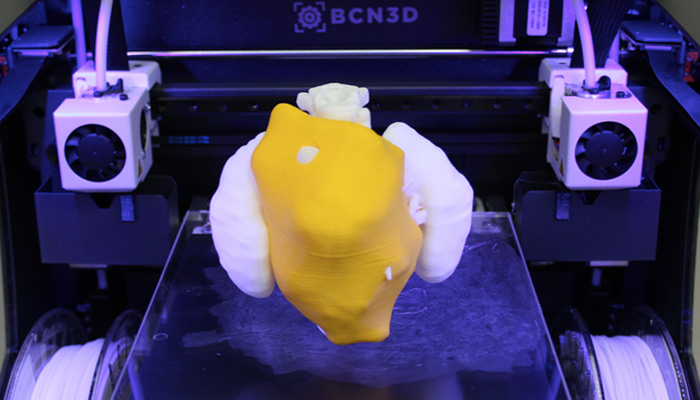
Examples of 3D printed anatomical models
3DN: Any last words for our readers?
The world of medical imaging, diagnosis and treatment is evolving rapidly thanks to the integration of new technologies such as 3D and artificial intelligence. We could cite as examples already common in many centers the planning of orthognathic surgeries using 3D or the combination of radiomics with other omics in the field of oncology. However, there is still a knowledge gap between the normative competencies taught in undergraduate courses and the training needed by these professionals in their day-to-day work. With Expert3D we aim to close this gap with a practical approach to competencies, easily transferable from day 1 after completing the course. So if you are interested in this subject or you are starting to work with it, we encourage you to sign up for the Expert3D course, we still have places for the Barcelona, Naples and Heidelberg-Riga-Coimbra editions in October.
What do you think of Expert3D’s training? Let us know in a comment below or on our Facebook, Twitter and LinkedIn pages! Sign up for our free weekly Newsletter here, the latest 3D printing news straight to your inbox!
*All photo credits: Expert3D


